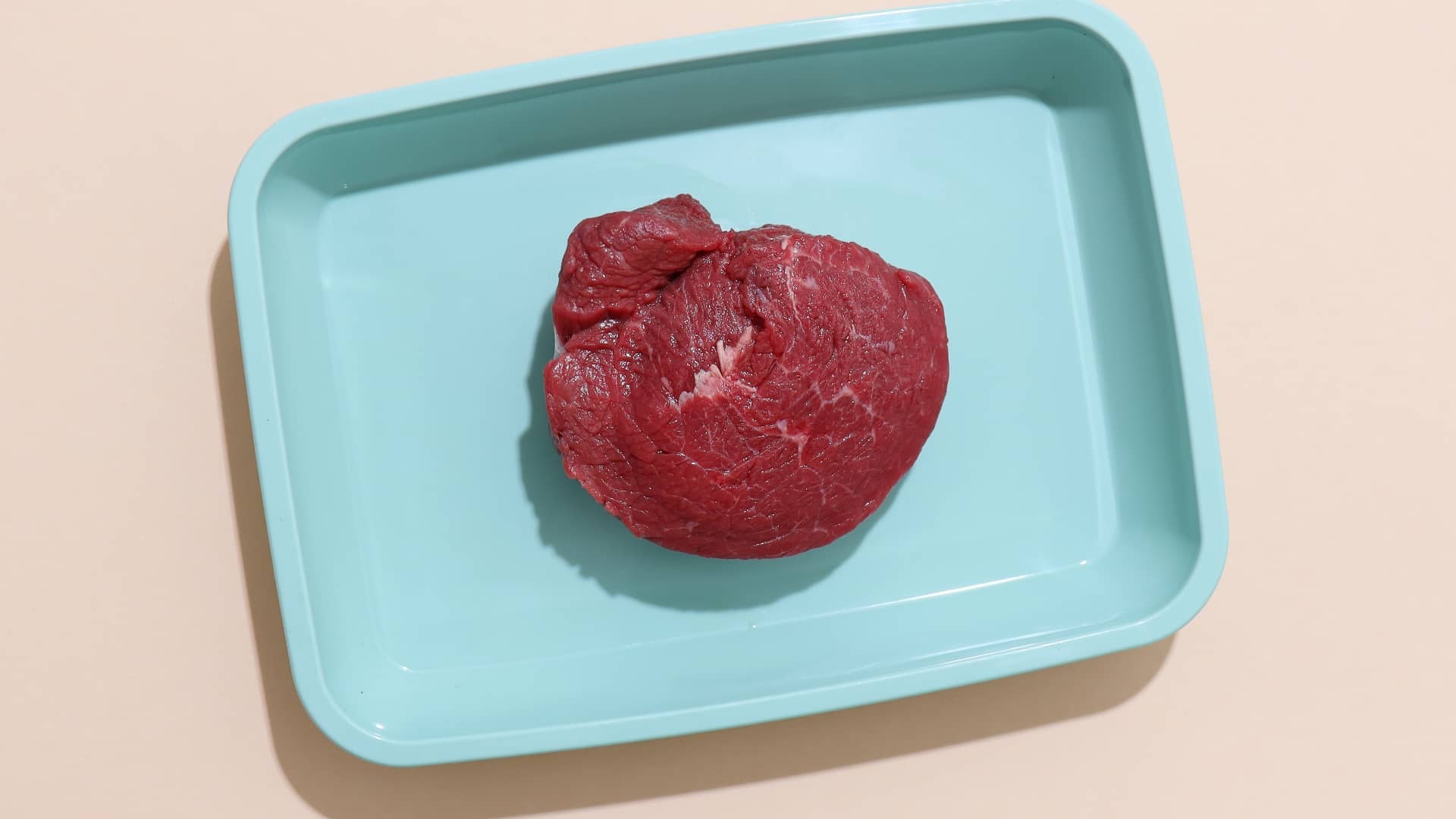Welcome to the Meataverse.
August 2023

We are constantly told that farming is damaging the environment. According to the United Nations, animal agriculture contributes an estimated 14.5% of the world’s greenhouse gas emissions and, whether you believe the planet is warming naturally or from man-made industries, things are undoubtedly changing. That’s not to mention the global population growth rate is estimated at 70 million people per year! Plus, more extreme climates, war and challenging growing conditions globally are affecting food production every year making feeding this growing population harder and harder.
Innovation suggests that meat should be grown in a lab. It appears it can be more eco-friendly requiring 45% less energy use, 99% less land use and produces 96% fewer greenhouse emissions. I’m not talking about plant-based meat – that is something different altogether – but a tender, mouth-watering Angus ribeye steak that looks like the real thing. There’s a company called Mirai Foods who is trying this exact thing.
So, what exactly is lab grown meat? Well, you harvest stem cells (which are the building blocks for everything) from the muscles and organs of the live animal in a harmless way. The tissue sample is made up of muscle and fat cells which can be separated. The muscle cells are dissected and cultured with amino acids and carbohydrates to grow. But one muscle stem cell can grow over 1 trillion muscle stem cells, making it extremely efficient and scalable. Not to mention being able to control the marbling, fat content and other nutrients.
This impending disruption to the traditional ag markets has already begun. The question is, how far is it going to go, and will it forever change the historic faming models and principles this country relies on so heavily? Is what Mirai Foods developing the end of the meat processing industry forever? With Gen Z and Gen Alpha demanding more sustainable, alternative practices which have less impact on our planet, coupled with mind blowing innovation and constant scientific discovery it’ll be the brands that get ahead of this and change with it that will emerge victorious.
There is no question the New Zealand red meat industry needs to focus on offering premium grass feed beef and lamb by telling our story, but what if farms where no longer 1000+ hectares and owned by big corporates? What if stock numbers were reduced to just half a dozen, focusing on optimal health and performance of the cattle or sheep? And what if they were grown and raised in a stress-free environment keeping the green lobby and animal rights activists happy? Could this be the start of new smaller family-owned farms rearing premium Black Angus, Hereford and Wagyu beef cattle on 1-10 hectares or less for their stem cells, muscle, and fat tissue? Large sheep stations would be reduced to lifestyle block-sized farms producing tender premium grade lamb, freeing up land for native forests, cleaning up of water ways and drastically reducing our impact on the environment – all while enhancing our clean green image and premium grade beef and lamb. Instead of sending the cattle off to meat processors for grading and slaughtering, a health expert arrives on farm, measuring the health of the animal and instead of bringing in the stock truck, takes a stem cell sample to create different premium cuts of meat based on the animal’s unique profile. The tissue samples could also be mixed with other breeds to create a different range of tastes, then exported around the world. Consumers are still getting their plate to pasture story because the cut of meat served up in a London 3-star Michelin restaurant can be traced back to the local farm where it happily grazes thick lush pasture. In supermarkets the premium cuts could be packaged with a QR code link to a live feed of the animal still grazing, so consumers can see where their meat derived from. Or when people are booking a restaurant weeks ahead, they can specify what cut of meat they want, which part of the country it comes from and what breed they want it from? Gisborne Charolais, Dannevirke Angus or a Canterbury Hereford, each having a slightly different flavour profile based on its growing location and type of feed.
Does this open the door to creating more opportunity for our farmers because they can now demand a premium and sell the stem cell rights? Maybe, or if MacDonalds used lab meat in its burgers, would consumers prefer lab grown meat patties produced in an Indian science lab or a lab grown meat patties grown from a single grass feed black Angus beef cattle on a New Zealand farm reared by Vaughan and Amy Spenser all for the same price but with complete transparency and a great story to tell? Maybe the demand is consumers in Asia buying a cattle beast on a New Zealand farm and when ready having stem cells taken and made into a variety of meats for them to use throughout the year. Perhaps subscription-based farming is the way forward. Pay $5,000 a year and have lab grown meat from a select cattle beast delivered to your door. Farmers could then make much more money over the life of one cattle beast than they do now for the entire herd.
Who knows, farmers of the future could all be virtual, playing Farming Simulator 2050 and selling their produce over the Meataverse while sitting at their desk wearing Apple Vision pro VR goggles!




